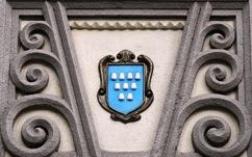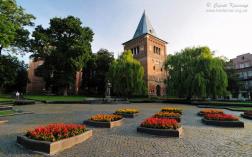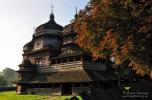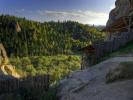On the salt trade route to the Carpathians

Designation: On the salt trade route to the Carpathians
Route: Lviv-Drohobych-Urych-Lviv
Duration: 1
Price:
Description
Itinerary
Prices and dates
Information
Travel reservation
Places of interest

The Town of Drohobych emerged in the 11th century. Since then, it has been always a salt production center. Therefore, salt became a symbol of the town and is depicted in its coat of arms. In the nineteenth century, oil refining underwent a rapid development in Drohobych alongside the traditional salt production industry. When Drohobych changed from the salt center to the oil center, lots of stone buildings emerged and the town looked European.
Now Drohobych is the second largest populated town and has the second largest economy in Lviv region.
In the town we will see the Roman Catholic Church of Saint Bartholomew. The church walls carry many memorials which can help to trace the history of Drohobych. The monument to the most prominent townsman Yuriy Kotermak, a Doctor of Philosophy and Medicine, is located right near the church. In Bologna Yuriy Kotermak taught astronomy and medicine. In the years of 1481 and 1482, he was Rector of the University of Bologna which is the oldest university in Europe.
The famous landmark of the town is the wooden Church of Saint George. This church dates from the late 15th and early 16th centuries. The church interior is covered in wall paintings dating from the 17th century. The wall paintings are the real treasure of the church. The wooden Church of the Exaltation of the Holy Cross was built in the vicinity of St. George’s Church in 1613. This church is an example of the Ukrainian Renaissance sacral architecture.
You can also visit Drohobych Salt Factory which was founded in 1250. It is the oldest continuously operating enterprise in Ukraine.
Bruno Schulz, a Polish writer and artist of Jewish descent, was born in Drohobych. The most famous literary works by Schulz are: “The Cinnamon Shops” and “Sanatorium under the Sign of the Hourglass”.

The name of the Tustan rock fortress has a Slavic origin and consists of two words, “tu” (here) and “stan” (stand). In the third century B.C. there was a pagan sanctuary on these rocks. And between the ninth and thirteenth centuries, the rock fortress was part of the defense line of the southwestern border of the Kievan Rus as well as the customs post on the salt route from Drohobych to Hungary. The fortification was built on the rocks towering 50 meters above the valley. Therefore the fortress was impregnable. Due to its location, Tustan was involved in international trade relations. The Dirhams found here prove it, since those Arabic coins were the most important silver coins in some parts of Europe between the 10th and 12th centuries. As soon as salt deposits were mined in Central Europe, there was no need for salt transportation from the Pre-Carpathian Mountains that led to the decline of the Tustan fortress.
More than 4,000 slots and grooves, cut in the place where the wooden construction once existed, allow to reconstruct the fortress with 90% certainty.





